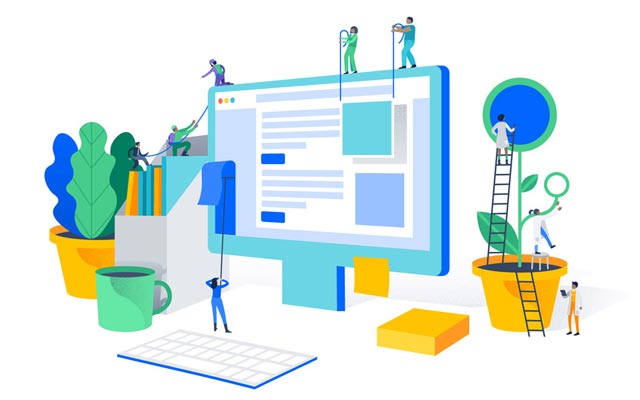Application Lifecycle Management – ALM
Ensure efficiency, collaboration, quality, speed & agility for the lifecycle of an application.
Contact usWhat is Application Lifecycle Management?
Our view on ALM:
Application Lifecycle Management (ALM) includes people, tools and processes and controls the complete lifecycle of an application from development to replacement. For this purpose, application lifecycle management integrates the various disciplines of project management, requirements management, software development, testing, quality assurance, deployment and maintenance, which were often separated within the framework of previously used development processes (e.g. waterfall method).
ALM supports agile development and DevOps approaches, which makes collaboration between teams in companies much more efficient.
Through holistic application lifecycle management, software development is designed effectively and with consistently high quality, and the applications are accompanied throughout the lifecycle.

What added value does our services in Application Lifecycle Management offer you?
Tailor-made application lifecycle management concepts for companies
Application Lifecycle Management solutions “out-of-the-box” with proven tools
Connection & integration of ALM with your PDM system and PLM processes

ALM out-of-the-box with proven tools
The advancing digitalisation challenges especially those companies that have predominantly developed mechanical products up to now. The proportion of software in their products is increasing and they need application lifecycle management and efficient Software Development processes in the short term.
With established tools, e.g. those from Atlassian and Cloudbees, we can easily provide you with scalable development environments “out-of-the-box”.
The consistency of the Atlassian tool family and the Jenkins Enterprise Automation Pipelines from CloudBees increase efficiency and thus your ROI through automation, build & deployment processes and proven templates as well as workflows for e.g. requirements & issue management.
We support you during the introduction with best practices, pre-configured templates and support and enable you to get started at short notice.
Connect Product Lifecycle Management (PLM) with Application Lifecycle Management (ALM)
The proportion of software in innovative mechatronic or even cyber-physical products is constantly increasing. This is accompanied by an increase in the complexity of interdisciplinary challenges in product development. In this context, the focus is increasingly shifting to a frequently unresolved issue in data management: the non- or insufficient integration of application lifecycle management systems (ALM) for Software Development into the Product Lifecycle Management systems (PLM) of “classic” product development.
Together with you, we develop your individual ALM/PLM roadmap with our proven process model, assess the maturity level and define the necessary interdisciplinary technical data model for successful integration. Regardless of which systems you use, we ensure system integration and support you in specification and development of necessary interfaces.
Read more about this in our publication in the ProduktDaten Journal in german language.

Find more information about our ALM services in the PDF flyer.
Please download our information brochure on Application Lifecycle Management by clicking the button.

FAQ – frequently asked questions on the subject of Application Lifecycle Management.
Application Lifecycle Management supports a DevOps approach, which in turn works well with Linux® containers. Containers provide teams with the underlying technology for cloudnative development and support a unified environment for development, deployment, integration and automation.
ALM is sometimes confused with SDLC (Software Development Life Cycle) because both have to do with software development. The main difference is that the focus of SDLC is primarily on the development phase, whereas ALM takes into account the entire application lifecycle – from conception to maintenance to decommissioning – and goes beyond the development of the application. SDLC can be seen as part of application lifecycle management.
CI/CD (Continuous Integration/Continuous Delivery) ensures continuous automation and monitoring across all phases of the application lifecycle, from integration and testing to deployment and implementation.





















